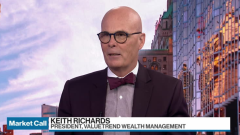Oct 15, 2023
PBOC Ramps Up Liquidity Support to Boost China Economic Recovery
, Bloomberg News

(Bloomberg) -- China’s central bank stepped up efforts to support the nation’s economic recovery and debt sales by delivering the largest cash injection since 2020 with one-year policy loans.
The People’s Bank of China added a net 289 billion yuan ($39.6 billion) into the financial system via the so-called medium-term lending facility, the largest monthly injection since December 2020. At the same time, it drained a net 134 billion yuan of short-term liquidity through open-market operations.
The injection of extra cash into the economy will offer a much-needed boost to China’s growth, which has been challenged by a lack of demand and a downturn in the property market this year. It will also provide lenders with sufficient funding, as Beijing and local governments are set to sell more bonds to finance stimulus spending and as the tax payment season approaches.
“The additional liquidity injection aims to maintain stable interbank liquidity conditions,” said Becky Liu, head of China macro strategy at Standard Chartered Bank. “It also reflects stronger liquidity demand by commercial banks.”
The PBOC kept the MLF interest rate unchanged at 2.5%, in line with expectations. Yields from two-year to 10-year sovereign bonds rose by one to four basis points on Monday.
The move comes as Beijing considers a new round of stimulus to help the economy meet the official annual growth target of around 5%. The Ministry of Finance sold 1.2 trillion yuan of central government bonds in September, 60% higher than the average for the same period in the past three years, draining cash from the system.
More supply is arriving, including a 1 trillion yuan program to help regional governments refinance hidden debts — a risk that Beijing is keen to reduce. Policymakers are also weighing additional sovereign bond sales of at least 1 trillion yuan for spending on infrastructure, Bloomberg News reported earlier.
“The net injection of MLF is helpful to stabilize market liquidity supply,” said Ming Ming, chief economist from Citic Securities Ltd. “It is expected that the tight liquidity situation will be eased and bond markets in general will be volatile.”
Uneven Recovery
Official data on Friday showed a surprise flatlining of the consumer inflation rate last month, though other recent indicators such as exports have suggested the slowdown may be moderating. Data released last week also showed the amount of loans made missed expectations. Authorities have rolled out piecemeal measures to buttress the economy but refrained from big stimulus.
China’s monetary policy will make better use of both aggregate and structural tools, central bank chief Pan Gongsheng said in a statement on Saturday, referring to broad moves that affect overall liquidity and targeted ones to aid certain industries. It will seek more sustainable growth while maintaining a “reasonable” expansion pace, he said.
Though markets are still cautious about the precarious economic recovery, financial institutions ranging from Citigroup Inc. to JPMorgan Chase & Co. have upgraded growth targets earlier this month after some improvement in indicators including manufacturing activity.
The cash injection should “offset the demand from government bond supply this week,” said Zhaopeng Xing, senior China strategist at Australia & New Zealand Banking Group Ltd. “The tight liquidity may ease in the second half of October, as the authorities mandated local governments to spend all money raised by bonds before the end of October.”
--With assistance from Wenjin Lv.
(Adds quote in eighth paragraph.)
©2023 Bloomberg L.P.






